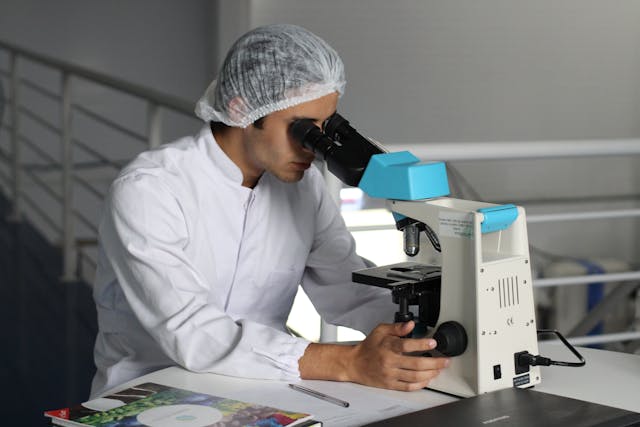Although the purpose of medical procedures is to diagnose and treat illnesses, unforeseen complications can occasionally occur and have tragic results. The tragic death of a woman who went to a clinic for treatment of a minor toothache only to pass away from a severe allergic reaction to contrast dye used during a CT scan is one such instance that has drawn attention.
In medical imaging, contrast dyes are frequently used to improve the visibility of tissues, blood vessels, and organs. Although they are usually regarded as safe, they occasionally cause allergic reactions that can be fatal. This case emphasizes how crucial comprehensive patient evaluations, informed consent, and strict safety procedures are to averting tragedies of this nature.
What is Contrast Dye and Why is it Used?
Contrast dye, also known as a contrast agent or radiographic contrast medium, is a substance used in diagnostic imaging procedures such as CT scans, MRIs, and X-rays. It improves the clarity of images by altering how X-rays or magnetic fields interact with body tissues. The most commonly used contrast agents include:
- Iodine-based contrast dyes: Typically used in CT scans and X-ray imaging.
- Gadolinium-based contrast agents (GBCAs): Used in MRIs.
- Barium sulfate: Used for digestive tract imaging.
While these agents play a crucial role in medical diagnostics, they are not entirely without risk. Some individuals may experience mild side effects, such as nausea or warmth, while others may have severe allergic reactions, leading to anaphylaxis, organ failure, or even death.
Understanding Allergic Reactions to Contrast Dye
Most allergic reactions to contrast dyes are mild, with symptoms such as:
- Itching or skin rash
- Nausea and vomiting
- Dizziness or lightheadedness
- Mild swelling around the injection site
However, in rare cases, some individuals develop contrast-induced anaphylaxis, a severe and life-threatening reaction that can cause:
- Difficulty breathing due to airway swelling
- A sudden drop in blood pressure (anaphylactic shock)
- Irregular heartbeat
- Seizures
- Loss of consciousness
The Tragic Case: A Fatal Allergic Reaction to Contrast Dye
In this instance, a woman complained of a chronic toothache and went to a clinic. Doctors suggested a CT scan to find out what was causing her pain. A contrast dye was injected into her bloodstream as part of the procedure. She experienced a severe allergic reaction in a matter of minutes. Her condition quickly worsened in spite of medical intervention, and she died two hours later.
Could This Have Been Prevented?
While allergic reactions to contrast dye are rare, medical professionals must take all possible precautions to minimize risks. Here are some crucial safety measures that could help prevent similar tragedies:
1. Screening for Allergies and Risk Factors
Before administering contrast agents, doctors should conduct a thorough patient history review. Those with a history of allergic reactions to iodine, shellfish, or contrast agents should be flagged as high-risk individuals. Additionally, individuals with conditions such as asthma, kidney disease, or heart disease may be more susceptible to severe reactions.
2. Pre-Medication Protocols for High-Risk Patients
In some cases, patients who have had mild allergic reactions to contrast dyes in the past may still need imaging studies. To reduce the risk of a severe reaction, doctors often prescribe pre-medications such as antihistamines (like diphenhydramine) and corticosteroids.
3. Patient Education and Informed Consent
Patients should be fully informed about the risks associated with contrast dye before undergoing procedures. A detailed conversation about potential side effects and alternative imaging options can help patients make informed decisions.
4. Availability of Emergency Response Measures
Healthcare facilities must be well-equipped with emergency medical supplies, including epinephrine (used to treat anaphylaxis), oxygen support, and trained staff capable of handling medical emergencies. Immediate intervention can significantly increase the chances of survival.
5. Exploring Alternative Imaging Methods
In cases where contrast dye poses a significant risk, alternative diagnostic methods should be considered, such as:
- Non-contrast MRIs: In some cases, MRIs can provide detailed images without requiring a contrast agent.
- Ultrasound imaging: Though not suitable for all diagnoses, ultrasounds can sometimes replace contrast-based imaging.
The Need for Greater Awareness and Medical Transparency
This tragic incident serves as a wake-up call for both the medical community and patients. Ensuring transparency in medical procedures, conducting proper screenings, and making safety a top priority can prevent unnecessary deaths. It also raises questions about how frequently patients are properly assessed for potential allergic reactions before being administered contrast dye.
The Role of Regulatory Bodies
Government and healthcare regulatory agencies must enforce stringent guidelines on the administration of contrast dyes. Some possible regulatory improvements include:
- Mandatory allergy testing before contrast dye administration.
- Standardized informed consent procedures outlining all potential risks.
- Stricter monitoring and reporting of adverse reactions to contrast agents.
Conclusion
The tragic death of a woman who was trying to get rid of a toothache highlights the possible risks of using contrast dye. Although they are uncommon, allergic reactions of this kind are not impossible. In order to prevent tragedies in the future, this incident emphasizes the vital need for comprehensive pre-procedure screening, efficient risk mitigation techniques, and enhanced patient education.
Important measures to ensure personal safety for patients undergoing imaging procedures include being aware of possible allergic reactions, sharing past medical history with healthcare providers, and, if required, obtaining second opinions. Even though contrast agents are still very useful in contemporary medicine, patient safety and making educated decisions must always come first in medical practice.

